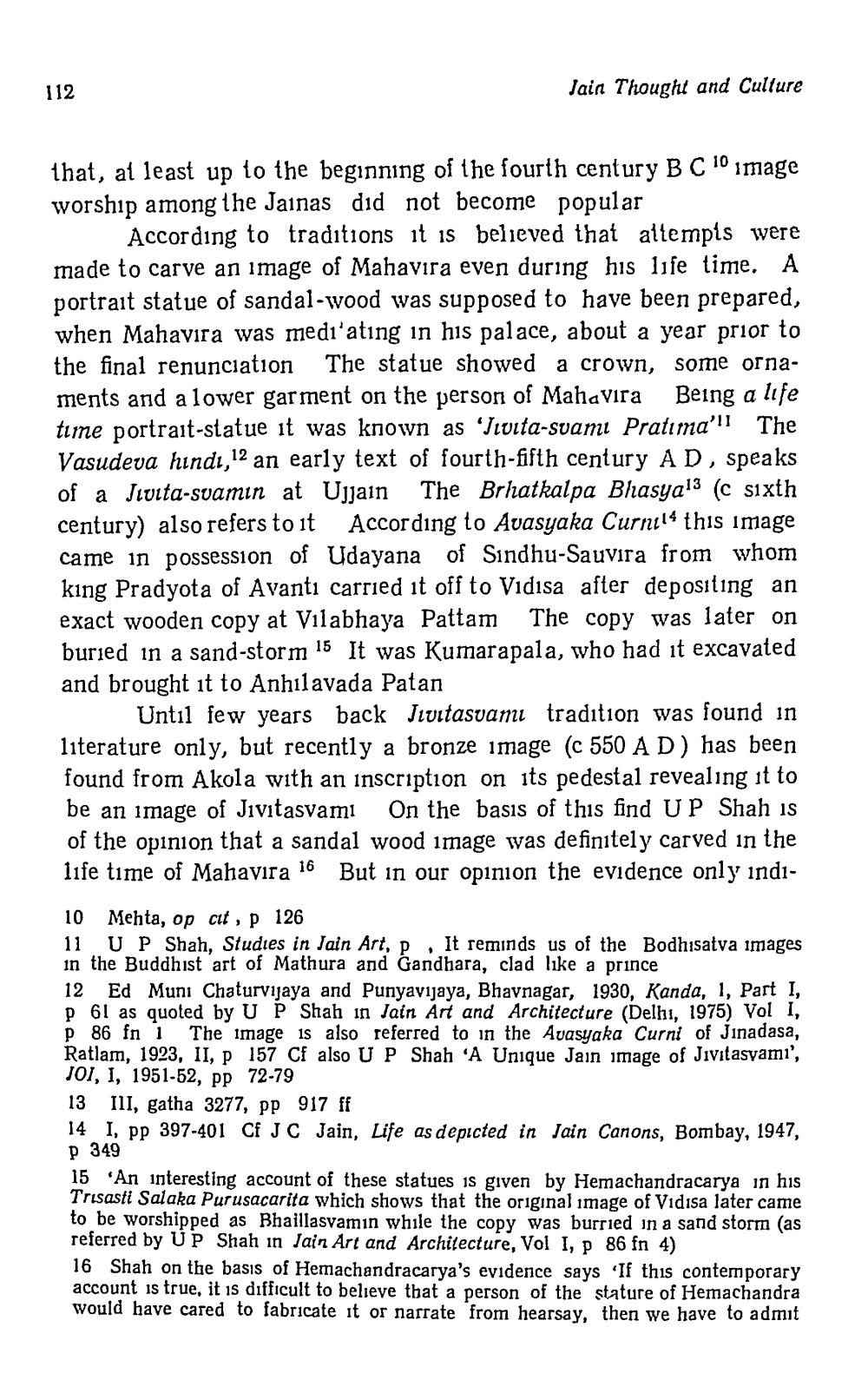________________
112
Jain Thought and Culture
that, at least up to the beginning of the fourth century B C 10 image worship among the Jainas did not become popular
According to traditions it is believed that attempts were made to carve an image of Mahavira even during his life time. A portrait statue of sandal-wood was supposed to have been prepared, when Mahavira was medi'ating in his palace, about a year prior to the final renunciation The statue showed a crown, some ornaments and a lower garment on the person of Mahavira Being a life time portrait-statue it was known as 'Jivita-suami Pratima'" The Vasudeva hindi,12 an early text of fourth-fifth century AD, speaks of a Jivita-svamin at Ujjain The Brhatkalpa Bhasya13 (c sixth century) also refers to it According to Avasyaka Curnil this image came in possession of Udayana of Sindhu-Sauvira from whom king Pradyota of Avanti carried it off to Vidisa after depositing an exact wooden copy at Vilabhaya Pattam The copy was later on buried in a sand-storm 15 It was Kumarapala, who had it excavated and brought it to Anhilavada Patan
Until few years back Jivitasvamı tradition was found in literature only, but recently a bronze image (c 550 AD) has been found from Akola with an inscription on its pedestal revealing it to be an image of Jivitasvami On the basis of this find UP Shah is of the opinion that a sandal wood image was definitely carved in the life time of Mahavira 16 But in our opinion the evidence only indi
10 Mehta, op cit, p 126
11
UP Shah, Studies in Jain Art, p, It reminds us of the Bodhisatva images in the Buddhist art of Mathura and Gandhara, clad like a prince
12 Ed Muni Chaturvijaya and Punyavijaya, Bhavnagar, 1930, Kanda, 1, Part I, p 61 as quoted by U P Shah in Jain Art and Architecture (Delhi, 1975) Vol I, p 86 fn 1 The image is also referred to in the Avasyaka Curni of Jinadasa, Ratlam, 1923, II, p 157 Cf also U P Shah 'A Unique Jain image of Jivitasyamı', JOI, I, 1951-52, pp 72-79
13 III, gatha 3277, pp 917 ff
14 I, pp 397-401 Cf JC Jain, Life as depicted in Jain Canons, Bombay, 1947, p 349
15 An interesting account of these statues is given by Hemachandracarya in his Trisasti Salaka Purusacarita which shows that the original image of Vidisa later came to be worshipped as Bhaillasvamin while the copy was burried in a sand storm (as referred by UP Shah in Jain Art and Architecture, Vol I, p 86 fn 4)
16 Shah on the basis of Hemachandracarya's evidence says 'If this contemporary account is true, it is difficult to believe that a person of the stature of Hemachandra would have cared to fabricate it or narrate from hearsay, then we have to admit




